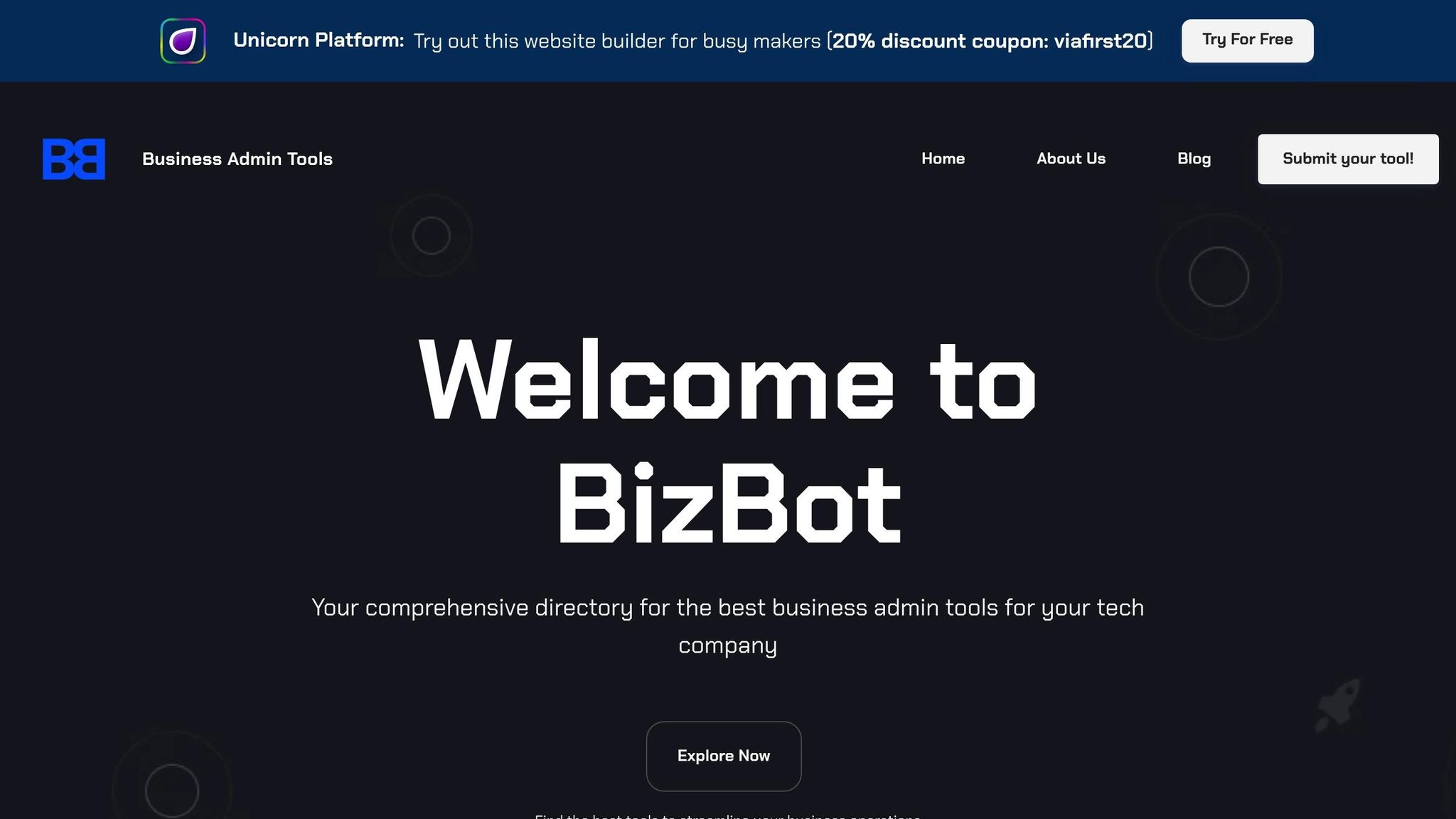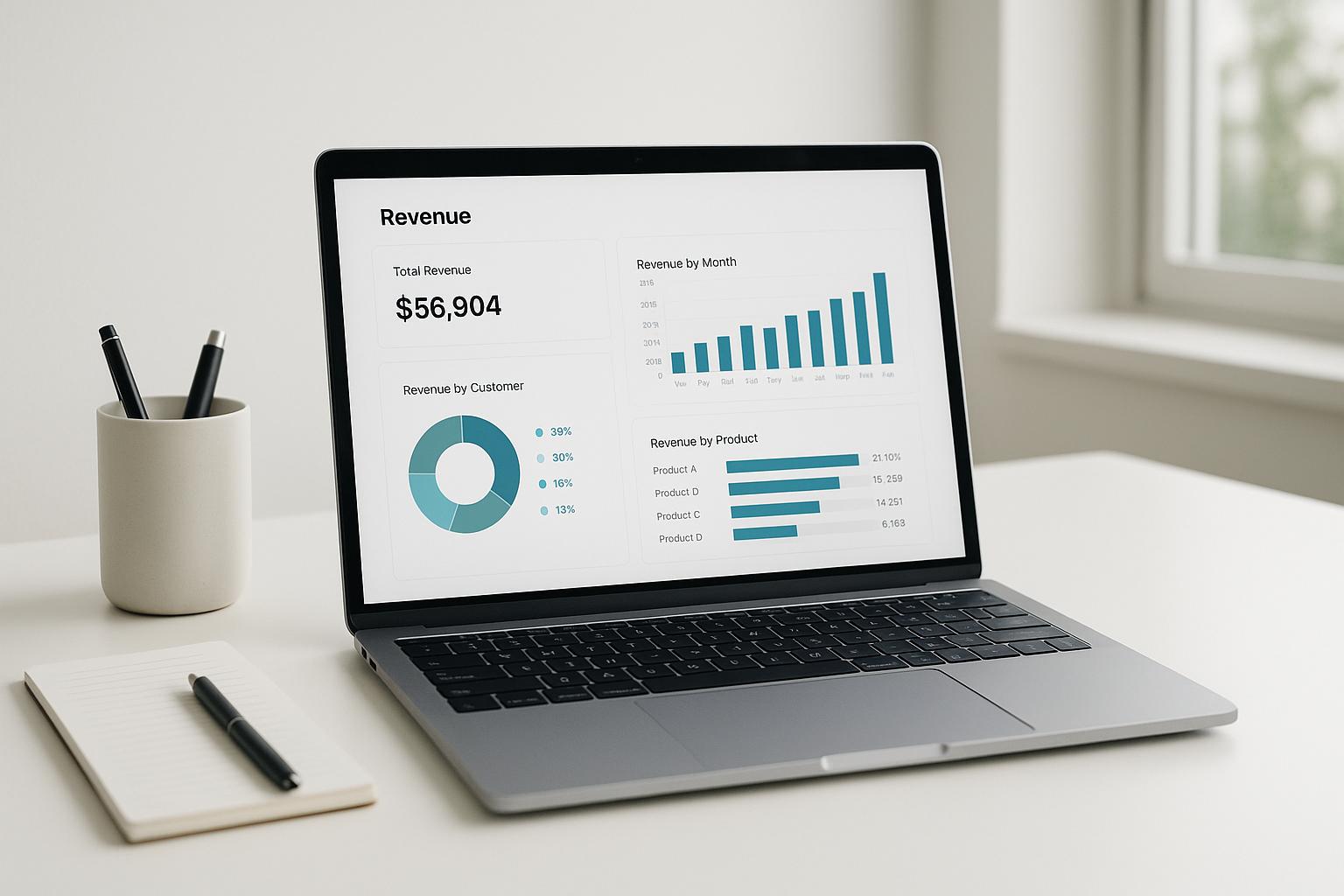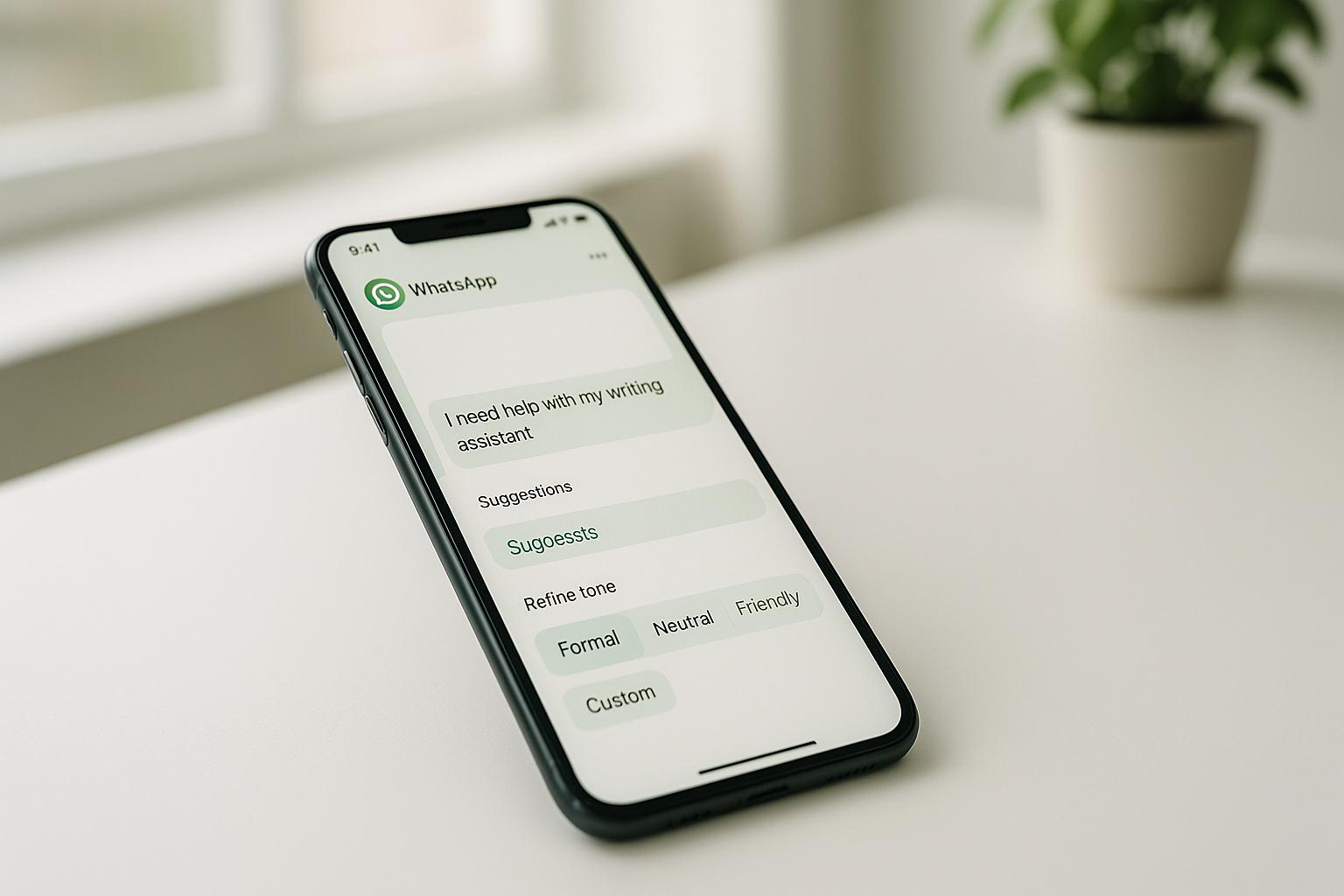Appointment scheduling tools simplify booking, managing, and tracking appointments online. They eliminate the hassle of manual scheduling, reduce no-shows with automated reminders, and allow customers to book 24/7. These tools often integrate with calendars, payment systems, and customer management platforms, making them a practical choice for businesses of all sizes.
Key Benefits:
- 24/7 booking access for clients.
- Automated reminders to reduce missed appointments.
- Payment processing to secure upfront payments.
- Calendar syncing to prevent double bookings.
- Custom booking pages to reflect your brand.
Types of Tools:
- Basic Scheduling Tools: Simple, no-frills solutions for small businesses.
- Calendar-Connected Tools: Sync with platforms like Google Calendar for real-time updates.
- Specialized Industry Tools: Tailored for industries like healthcare, fitness, or professional services.
Why It Matters:
These tools save time, improve customer experience, and help businesses operate efficiently. Whether you're a freelancer, small business, or part of a larger team, choosing the right tool can streamline your operations and boost productivity.
7 Best Appointment Scheduling Software Apps 2025 (Ranked by Best Use Cases)
Types of Appointment Scheduling Tools
The world of appointment scheduling tools is diverse, offering options tailored to different business needs and scales. To find the best fit for your operations, it's essential to understand these categories. Each type serves a unique purpose, whether it's basic booking, seamless calendar integration, or addressing specific industry requirements.
Basic Scheduling Tools
These tools focus on the essentials of appointment booking. They're a go-to choice for freelancers, consultants, and small businesses that need a simple, no-frills solution. Features typically include:
- A clear calendar display
- Time slot selection
- Basic confirmation emails
Often operating on a freemium model, these tools are perfect for businesses just starting out. Their straightforward design means setup is quick, and you won’t need extensive training to get up and running. This simplicity makes them ideal for single-service businesses like hair salons, tutoring services, or consulting firms, where appointment types don’t vary much.
Calendar-Connected Solutions
Calendar-connected tools take scheduling to the next level by integrating directly with existing calendar platforms. This ensures real-time updates and prevents double bookings. Key features include:
- Automatic syncing of scheduled appointments with connected calendars
- Time zone adjustments, displaying availability in the client’s local time
- Unified management of personal and professional schedules
For teams, these tools are incredibly efficient. Each staff member’s calendar updates individually when a client books with them, while managers retain a complete view of overall availability. This makes coordinating across multiple team members much easier.
Specialized Industry Tools
Designed with specific industries in mind, these tools cater to unique operational and compliance needs. For example:
- Healthcare: Tools may include patient intake forms and compliance workflows.
- Fitness and Wellness: Platforms often handle class bookings, memberships, and package management.
- Professional Services: Features like detailed client data capture, document sharing, and billing integrations are common.
Many of these solutions also come equipped with robust reporting and analytics. These insights allow businesses to track performance, fine-tune resource allocation, and improve client management. Whether you’re running a medical practice, a yoga studio, or a law firm, specialized tools help streamline operations while addressing industry-specific demands.
Key Features and Benefits
To stay competitive and efficient, businesses need tools that go beyond basic scheduling. Modern appointment platforms have evolved into powerful systems that tackle common scheduling headaches while enhancing the client experience.
Main Features
These platforms are packed with tools designed to make scheduling seamless:
- Automatic reminders: These send confirmations and follow-up notifications, reducing no-shows and helping protect your bottom line.
- Time zone support: Automatically adjusts appointment times based on the client’s location, ensuring clarity when working across different regions.
- Payment integration: Lets clients pay deposits or full fees upfront, which not only secures their commitment but also reduces cancellations - a game-changer for service-based businesses.
- Calendar synchronization: Links directly to your existing calendar, preventing double bookings and keeping your availability up-to-date.
- Custom booking pages: Allows you to create branded pages that align with your business identity. Add your logo, choose matching colors, and collect essential client details - all while maintaining a professional look.
These features don’t just simplify scheduling; they also help businesses run more smoothly and efficiently.
Business Advantages
The benefits of these tools extend far beyond convenience. Automation reduces manual work, minimizes missed appointments, and streamlines revenue management, allowing you to focus on running your business.
Plus, the data these platforms gather - like booking trends and client behaviors - can guide smarter decisions about staffing, services, and marketing efforts.
Another major perk is the boost to client experience. Online scheduling offers the ease of 24/7 appointment booking, eliminating the back-and-forth of phone calls or emails. This not only saves time but also reinforces your business as professional and dependable.
Legal Requirements and Accessibility
For businesses in regulated industries, compliance is non-negotiable. Scheduling tools must meet HIPAA requirements, ensuring secure messaging, encrypted data storage, and detailed access logs to protect sensitive client information.
Accessibility is equally critical. Modern platforms adhere to ADA standards, offering features like screen reader compatibility, keyboard navigation, and proper color contrast to accommodate all users.
Strong data privacy is also a must. These tools should clearly outline what information they collect, how it’s used, and provide options for clients to access or delete their data in line with privacy laws.
sbb-itb-d1a6c90
Setting Up and Improving Appointment Scheduling Tools
Getting your appointment scheduling tools set up correctly can save you a ton of time and headaches down the road. A well-organized system keeps things running smoothly and helps avoid common scheduling mistakes.
Setup Process
Start by creating your account and setting your core business hours. Make sure to connect your calendar - whether it’s Google, Outlook, or Apple - to sync everything automatically and avoid double bookings. Many platforms let you customize availability for each day of the week, which is perfect if your schedule varies. Begin with your standard operating hours, then tweak them as needed for special cases.
Next, focus on service configuration. Define each service by its duration, price, and any specific requirements. Being realistic about how long each appointment takes can prevent rushed sessions and keep both your clients and staff happy.
Design your booking page to match your business branding. Add your logo, choose colors that reflect your website, and write clear descriptions of your services. This page is often the first thing clients see, so make sure it looks polished and professional. Don’t forget to include key details like your business address and contact information.
If you have a team, set up staff schedules. Each team member can have their own availability, skills, and list of services they offer. This way, clients can book the right person for the job. Once these basics are in place, you can fine-tune your workflow with features like automated buffers and reminders to make everything run even more smoothly.
Making Workflows Better
Setting up your system is just the beginning. To really make the most of it, you’ll need to refine your workflows. Adding buffer times between appointments is a great place to start. A 10–15 minute gap between bookings gives you time to prepare for the next client, review notes, or simply take a breather. This simple tweak can help reduce stress and improve the overall experience for everyone.
Automate reminders to keep no-shows to a minimum. Send an email reminder 24 hours before the appointment and a text message two hours prior. Include helpful details like what to bring, parking instructions, or any prep work the client might need to do. These small touches can make a big difference.
Establish clear cancellation policies and automate them. For example, you might require clients to cancel at least 24 hours in advance and charge a fee for late cancellations. Automating these policies keeps things consistent and eliminates awkward conversations.
Use the platform’s reporting tools to identify trends in your business. Look at data like peak booking times, popular services, and seasonal patterns. For instance, if Tuesday afternoons are consistently slow, you could run a promotion during that time or use it for catching up on administrative work.
Integrate intake forms into the booking process to gather important information upfront. Whether it’s health history for a medical office, allergy details for a salon, or specific needs for a consulting session, having this info ahead of time makes appointments more efficient and professional.
US Format Settings
Take your setup a step further by tailoring it to US format standards. Configure dates to display as MM/DD/YYYY and times in the 12-hour format with AM/PM. Use the dollar sign for pricing (e.g., $125.00) and format phone numbers like (555) 123-4567 for consistency.
For businesses working across time zones, proper time zone settings are essential. Set your primary time zone and enable automatic adjustments for clients in other regions. This helps avoid confusion over mismatched appointment times.
Lastly, format addresses to follow US postal standards. Use separate fields for the street address, city, state, and ZIP code. This not only ensures accuracy but also integrates seamlessly with mapping services, making it easier for clients to find your location.
Using BizBot for Business Management

BizBot makes it easier for U.S. companies to find the right tools by offering a directory of essential business administration solutions. This curated selection not only simplifies the decision-making process but also ensures smooth integration with your existing software.
Finding the Right Tools with BizBot
BizBot is designed with freelancers, small business owners, and growing companies in mind. Its focus is on providing user-friendly tools that work well with other business systems, which is key to keeping operations efficient.
For example, tools like accounting software, customer management platforms, and day-to-day operational apps often need to function together. With BizBot, you can find compatible solutions in one place, cutting down the time and effort spent sorting through generic options that might include unnecessary enterprise-level tools.
What BizBot Offers
BizBot provides a variety of tools to support business administration, including solutions for accounting, banking, HR, legal services, and even digital CFO services.
The digital CFO tools are particularly useful for businesses that are scaling up. As your company grows, staying on top of revenue tracking, performance analysis, and cash flow management becomes increasingly important. Having financial tools integrated with your other business solutions makes it easier to maintain oversight.
BizBot also includes subscription management tools, which help you keep track of software expenses and services. As your business adds more tools to support growth, managing everything through a single platform can simplify cost control.
Additional resources, such as board management and shareholder register tools, are available to support businesses as they expand and bring on investors or partners. These specialized tools ensure you're prepared for the next stages of growth.
Together, these features complement other offerings like appointment scheduling tools, creating a unified platform for managing various aspects of your business.
Why Choose BizBot?
BizBot’s integrated directory offers practical benefits for business owners. By ensuring that tools work seamlessly together, it helps streamline operations and manage costs effectively - an advantage for companies looking to scale efficiently.
The curated selection removes much of the uncertainty involved in choosing the right tools. Instead of spending hours reading reviews or comparing products, you can trust BizBot’s directory to provide solutions tailored to small business needs.
With its focus on integration and clarity, BizBot supports scalable operations without overwhelming complexity. For example, its accounting and ownership management tools make it easier to track revenue, manage taxes, and handle essential registration requirements. These foundational tools set the stage for building a professional and scalable operation.
For businesses on the rise, BizBot offers a way to access more advanced management tools without the steep learning curve of enterprise-level platforms. You can start with the basics and gradually expand your toolkit as your needs grow, all within one cohesive system.
Conclusion
Main Points
Appointment scheduling tools have become a cornerstone for managing time and improving customer interactions. This guide has highlighted their key benefits and provided practical setup tips, covering everything from basic tools to advanced integrations.
Automated scheduling offers a range of advantages: it saves valuable administrative hours, minimizes no-shows with automated reminders, and provides 24/7 booking access for customers. With a variety of scheduling tools on the market, businesses of all sizes and industries can find a solution tailored to their needs. For simpler scheduling tasks, basic tools are a great fit. Meanwhile, calendar-connected options integrate seamlessly into existing workflows, and industry-specific tools cater to specialized needs like those in healthcare, salons, or consulting services.
The real magic happens when scheduling tools are effectively integrated into your business operations. Tools that sync with your existing software create a unified system, reducing manual data entry and breaking down data silos. This integration becomes even more critical as your business expands and demands more advanced management solutions.
Proper setup is equally important, especially for U.S.-based businesses that need to ensure accurate formatting for dates, times, and phone numbers. While the initial configuration may take time, the payoff is clear: smoother operations, happier customers, and less time spent on administrative tasks.
With these advantages in mind, it’s time to fine-tune your scheduling approach to maximize efficiency.
What to Do Next
Start by reviewing your current scheduling process to pinpoint areas that need improvement. Think about factors like booking volume, team size, integration requirements, and the specific needs of your industry. These insights will guide you in selecting the right solution.
For a head start, check out BizBot's curated directory of scheduling tools. The platform specializes in user-friendly options that are perfect for small businesses and growing companies. These tools not only address your immediate needs but also offer scalability for the future. Plus, their integration capabilities take the guesswork out of connecting with your existing systems.
Once you’ve chosen a scheduling tool, remember that the work doesn’t end there. Optimization is an ongoing process. Keep an eye on your booking trends, ask for customer feedback, and tweak your settings to ensure you’re getting the most out of your system. By refining your scheduling setup, you’ll not only streamline operations but also enhance customer satisfaction.
BizBot’s platform goes beyond scheduling tools - it offers a comprehensive suite of business management solutions. As your company grows, you can expand your toolkit within a cohesive system designed to support scalable success.
FAQs
How can I choose the right appointment scheduling tool for my business?
To pick the right appointment scheduling tool for your business, start by pinpointing what you truly need. Ask yourself: How simple should it be to use? Does it need to grow with your business? What features are non-negotiable - like automation, calendar syncing, or reminder notifications? Also, consider your industry and the scheduling approach that works best for you, whether it’s fixed time slots, open scheduling, or something else entirely.
Matching these needs to your daily operations will help you choose a tool that boosts productivity and aligns with your goals. Look for options that are easy for both your team and customers to navigate, making the entire process as smooth as possible.
What features should I look for in an appointment scheduling tool to ensure it works well with my current systems?
When selecting an appointment scheduling tool, it's important to focus on features that work well with your current systems. For example, calendar synchronization with platforms like Google Calendar or Outlook helps keep your schedule organized and avoids any overlaps. Tools that integrate with CRM systems, video conferencing platforms, and payment processors can also make daily operations smoother and more efficient.
Features like automated reminders and real-time notifications are also worth considering. These can help cut down on missed appointments and improve communication with clients. By choosing a tool that blends easily with your existing setup, you can save time and simplify your workflow.
What are the best ways to use appointment scheduling tools to boost customer satisfaction and streamline operations?
To make the most of appointment scheduling tools, it’s essential to focus on features that improve both the customer experience and your day-to-day operations. Features like automated reminders and self-service booking make it easier for customers to schedule appointments while also cutting down on no-shows. Including buffer times between appointments can help ensure smoother transitions and avoid unnecessary delays.
Keep an eye on important metrics, such as appointment completion rates and customer feedback, to spot areas for improvement. Offering mobile-friendly scheduling and 24/7 access gives clients the flexibility to book whenever it’s convenient for them. At the same time, automated communication ensures everyone stays informed without requiring constant manual follow-ups. Together, these strategies can boost customer satisfaction and streamline your workflow.


